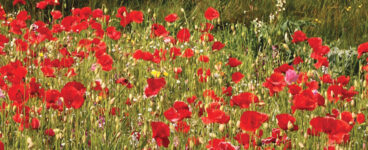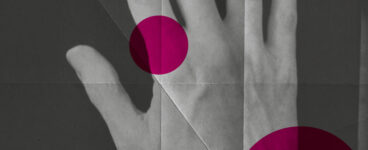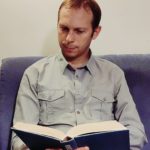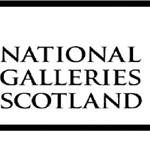‘What really hooked me on him though was something I examine in the book, the question of whether our negatives should cancel out our positives.’
Mixing travel writing, history and memoir, Iain Maloney’s latest book, The Japan Lights, not only offers insights on Scotland and Japan, but on the author and his subject, engineer Richard Henry Bruton. We asked Iain to tell us more about his unique travelogue.
The Japan Lights
By Iain Maloney
Published by Tippermuir Press
The Japan Lights is your first travel memoir since the acclaimed The Only Gaijin in the Village, published in 2020. In their own ways both books attempt to integrate Scotland with the unique culture of Japan. How did the experience of writing this book differ? And did it, as you note in the Introduction, ‘raise more questions than it answered’?
The Only Gaijin in the Village was very much a book about myself and my experiences, the culmination of 15 years living in Japan summed up in one narrative, which meant the next book necessarily had to be something different. People were asking for Gaijin 2 but I knew that was impossible—I’d used up all my good anecdotes for a start! I came to Japan when I was 24 and published Only Gaijin when I was 40. It was a book in which I was looking backwards and drawing conclusions whereas The Japan Lights is much more about the present and the future (strangely, for a book that is partly focused on the 19th century). The writing process was hugely different as a result: Only Gaijin involved pulling together all my anecdotes, my experiences, then sitting in my office and shaping it into something, but this was much more of a traditional travel book in that I actually had to go to all these remote corners of Japan on planes, trains, cars and boats, meet people, find out things, search for stories. At least, that was the original plan: Covid hit right as Only Gaijin came out and I was turning my attention to Brunton and his lighthouses. Writing a travel book during a lockdown was… challenging. That changed the book in fundamental ways. It also made it more interesting in a sense, for me, because I didn’t know how it would end. It was an adventure in the proper sense, a journey into the unknown.
In the historical figure of Richard Henry Brunton you situate a clear connection between Japan and your homeland. However, the symbol of the lighthouse has a literary significance too through the family of Robert Louis Stevenson. In what ways do you find lighthouses a useful symbol in connecting the two disparate cultures that are so central to you?
In both books I draw parallels between the cultures of Scotland and Japan but that’s really what all immigrants do: I’m approaching the point where I’ll have spent as much of my life in Japan as in Scotland, so in a sense the person I am today is a synthesis of living in those two cultures. That said, there are obvious connections that jump out—island nations, closeness to the natural world, a history of innovation and ambition—but there are also interesting contrasts: for example, Japan considers itself a small nation that wants to be a major power while Scotland really is a small nation that is comfortable with that. It’s when considering lighthouses and sea travel more generally that one of the most interesting differences arises, and that’s our attitude to the rest of the world. Scots have always looked abroad for opportunity—for better or worse—and for most of our history the sea was a highway, a connection between us and everyone else. In contrast, for 250 years Japan deliberately closed itself off from the international community, fiercely and often violently protecting their isolation. The sea was a negative, a highway that brought nothing but trouble. The building of lighthouses in Japan is a strong symbol of that changing, a symbol of a new way of thinking. Lighthouses are warning beacons, but they are also welcome mats: when you’ve been at sea for months, the sighting of a lighthouse beam warms the heart and answers the question ‘are we nearly there yet?’ Building a lighthouse is like sending Voyager into the depths of space with images of humans and some cultural artefacts: it’s saying, ‘here we are, come say hi.’
In the book’s introduction you identify an important shift in the way we view coastlines – from entries to the world to boundaries, edges. What can we learn about history by resituating our understanding of coastlines as the main points of departure and arrival?
I think it’s less about what we can learn about history but what we can learn from history to inform the present, which is always the fun part of history for me. We’re living through an isolationist period, a period of national retrenchment when walls literal and figurative are being erected around the world. At the exact same time, migration is increasing for a variety of reasons—war, economics, climate change, the entirely predictable fallout of globalised capitalism—and that’s only going to continue. As the climate emergency worsens (to take a justifiably pessimistic stance, since target after target is being missed and we may already have passed the point of no return) and millions more are displaced it’s going to inevitably force a rethink of the idea of what a nation is. So many people think of their country as a castle with high walls, battlements and a drawbridge that can be pulled up. This is particularly pronounced in places like Britain and Japan, island states surrounded by water: a literal moat. The water is a barrier between me and you. I like to think differently, to flip that. The sea is a bridge, a highway, the connection between us. In the past, if you wanted to go from Aberdeen to Edinburgh, you went by sea: it was easier, faster, often safer than going over land. The coastline in this sense is analogous to a kerbstone, the edge of the road rather than a barrier to another world. If you think of the North Sea, for example, as a street with houses off it—Scotland, Norway, Denmark—then the world opens up in a positive, friendly way.
Overshadowing every sentence in the book is the legacy of the 2011 Tohoku Tsunami, which caused such devastation along Japan’s eastern coastline. On top of this, COVID-19 hits during your five-year pilgrimage. Would you describe this as a book about tragedy, or about resilience?
Like all national disasters, the memory and legacy of the Tohoku triple disaster is behind everything in Japan, and we are still working through systemic and governmental failures: tragedy and resilience are two sides of the same coin. Humanity has always found ways to pick itself up and rebuild after tragedy and seeing that with my own eyes was humbling and inspiring. But I’d say this book is much more about fragility than tragedy or resilience. Tragedy for many of us is usually something that unfolds on our TVs, to other people, in other places. We are all guilty of falling into the ‘out of sight, out of mind’ trap, of thinking that the worst won’t happen to us. Travelling around the coastline, seeing the lighthouses which are symbols of human fragility against the power of nature, and then travelling to Tohoku and seeing the literal scars of the tsunami, seeing towns where the oldest building was built a decade ago, it brought home to me how easily everything could change in an instant. An earthquake, an eruption, a tsunami, something we have absolutely no control over, no way to predict, no way to stop, could happen today. And that’s not counting the risks we are taking building nuclear plants on fault lines or pushing the climate beyond breaking point. In places like Scotland, where the climate is benign, where natural disasters are unthinkable, we’ve lost that sense people like Brunton had of being puny humans at the mercy of the elements. If we found some of that humility again, maybe I wouldn’t be so pessimistic about the outcomes of the climate emergency.
There appears to be a personal investment in your quest to learn about Richard Henry Brunton, to go beyond his work and try and unearth the man behind the lighthouses. Did you see yourself in him? And what do you think his story can teach us?
There were quite a few Scots who came to Japan once the country reopened—Thomas Glover being the most famous—and I came across Brunton while researching a series of articles on some of them. Something about him got under my skin in a way that the others didn’t. I think I do see potential similarities between us beyond the obvious factual parallels. Some of his character flaws are ones that I’m aware of in myself—a confidence that can turn into arrogance, a perseverance that can become overpowering—but the difference is that I recognise these flaws in myself and attempt to change or mitigate them. He didn’t: he was right and everyone else was wrong. He was a stereotypical stubborn Victorian, not much given to self-analysis or admitting weakness.
What really hooked me on him though was something I examine in the book, the question of whether our negatives should cancel out our positives. As I was writing this book people around the world were discussing whether you can still enjoy an artist’s work when you find out they have committed crimes or hold reprehensible beliefs. Can we really expect our heroes to be perfectly flawless beings, literal saints with not a blemish or stain? How far should we go in calling out misdemeanors and where does forgiveness come in? Brunton was, even by the standards of his time, racist. The things he said about the Japanese in his writings are hugely offensive. He was a difficult man to like and he made many enemies amongst the foreign community in Yokohama. By the end, no one wanted to renew his contract or offer him a job, forcing him to leave Japan before he wanted to. But no one questioned his genius as a civil engineer, and the Japanese Coastguard today laud him as a hero, a man whose efforts saved hundreds of thousands of lives and are still doing so. That dichotomy in his character is what fascinated me about him: he embodies the argument raging today, a flawed man who did great things. He wasn’t a saint or a villain, he was a mess of a human, like the rest of us.
Do you have another pilgrimage lined up in the future – and another book?
I went on a very different kind of pilgrimage to Seattle just before Covid and wrote what I’m calling my Nick-Hornby-midlife-crisis book about grunge music, mental health, and growing up in Scotland in the 90s. I’ve yet to convince publishers that there’s a market for it, but I will persevere. I’m working on other things and as always going in multiple directions at once—poetry, science fiction, a literary novel—but I’m still looking around for the next non-fiction/travel project. It has to be the right idea though. This book took six years from lightbulb to publication, and that’s a long time to spend with one man, pursuing one idea.
The Japan Lights by Iain Maloney is published by Tippermuir Press, priced £9.99.
ALSO IN THIS ISSUE

 Iona Abbey Cookbook
Iona Abbey Cookbook
‘Another Abbey favourite – I inherited the recipe when starting to work as the cook.’

 This Is My Body Given For You
This Is My Body Given For You
‘There is life here, she says. Things growing. Things that have sustained me. Come and see.’













